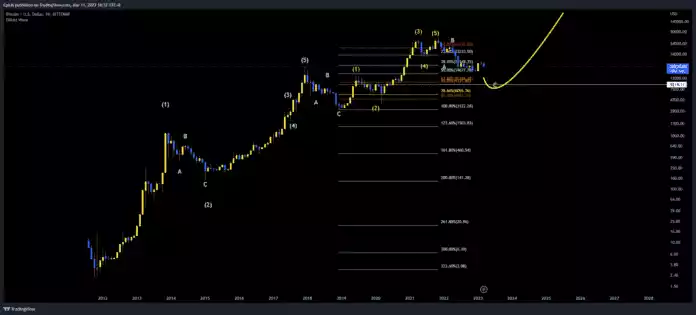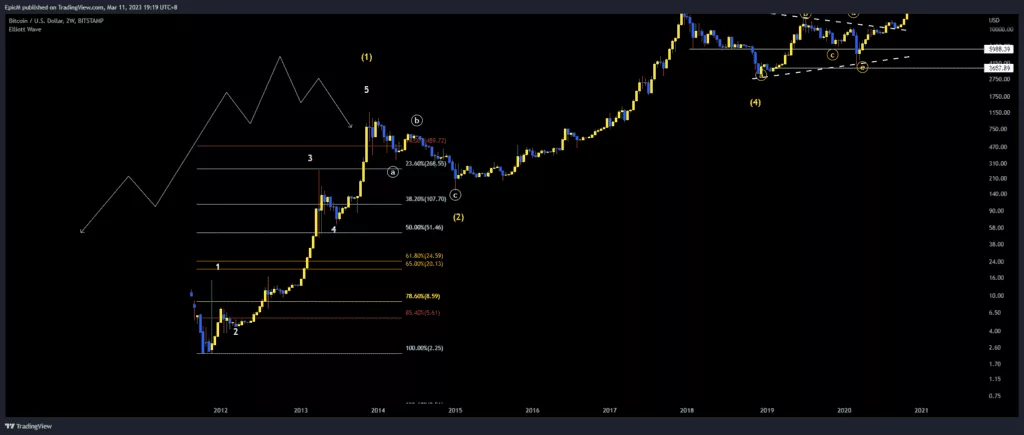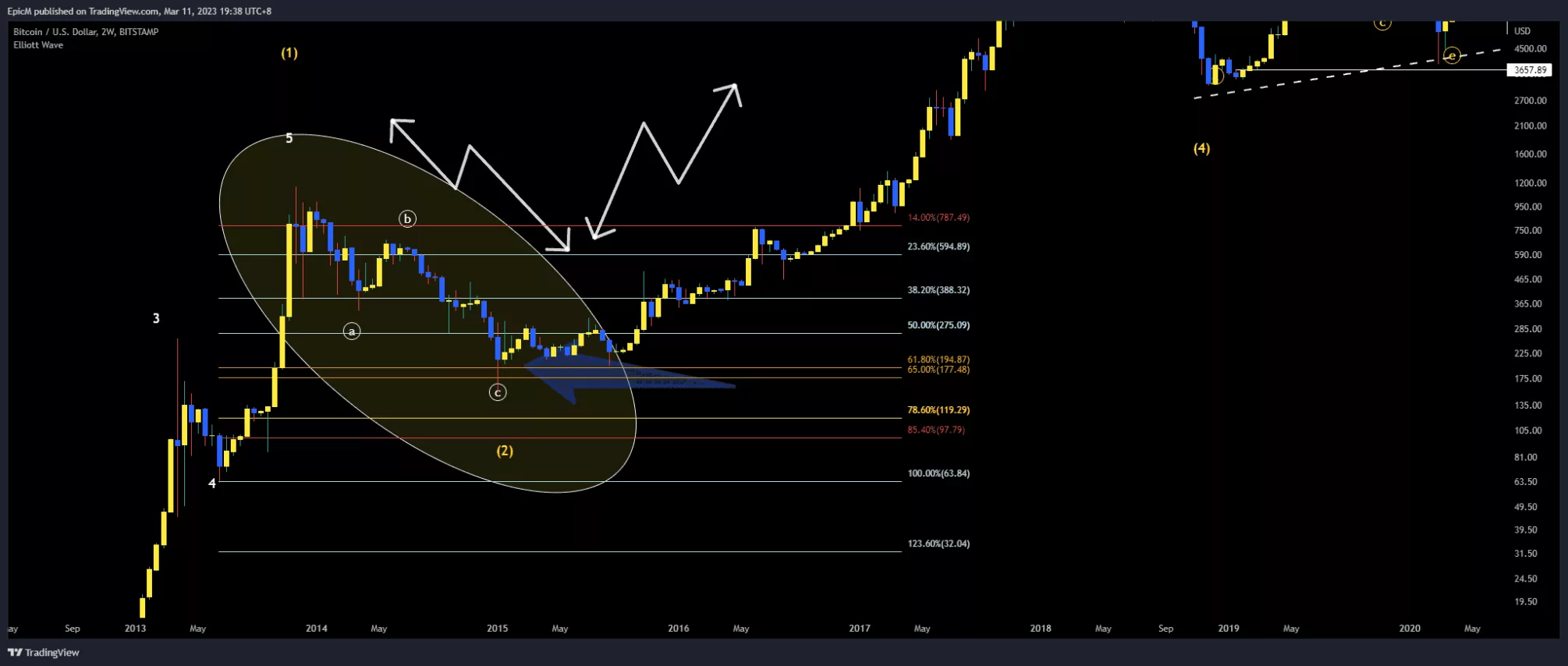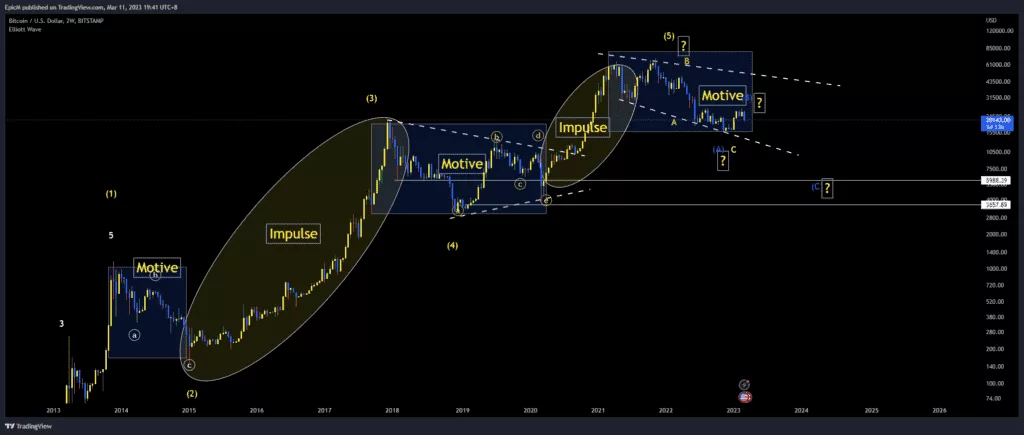Are you a trader who is striving to perfect your understanding of Elliott Wave Theory? Have you been on a quest for a detailed guide on how to identify Elliott Wave 1? If so, then you have arrived at the ideal location!
In this article, I’m going to take you through a step-by-step process of understanding and applying the Elliott Wave Theory. It’s an incredible tool that can help traders make more informed decisions and increase their profits. As someone who is passionate about trading, I’m excited to share my knowledge and experience with you.
I’ll start by giving you an overview of the Elliott Wave Theory and why it’s important. Then I’ll walk you through how to identify the first wave using various indicators. Finally, I’ll provide some useful tips on applying what you learn in your own trading strategies. So let’s get started!
Understanding Your Wave Count Basics When Applying Elliott Wave Theory
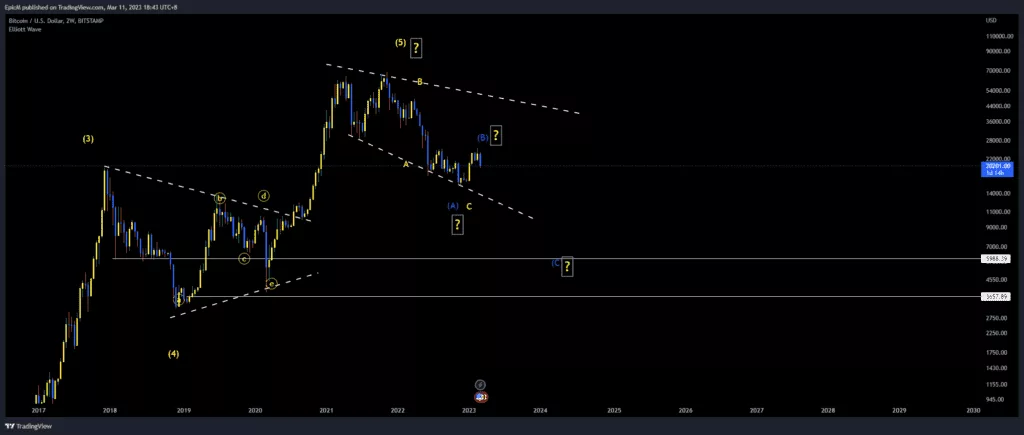
Are you interested in understanding the dynamics of market trends? If so, the Elliott Wave Principle is worth exploring. This guide serves as an introduction to this concept, which can be used for profitable trading opportunities. Let’s start by examining what makes up the Elliott Wave Theory and how it works.
Ralph Nelson Elliott created the Elliott Wave Principle in the 1930s. It proposes that markets move in identifiable waves with five distinct parts: impulse waves 1-3 and corrective waves 4-5. Thus, a trader’s task when applying this theory is to firstly recognize these waves and then use them to expect future market movements.
By discerning shapes of both impulse and corrective waves, an investor can gain essential knowledge about market trends. We’ll now discuss how recognizing how corrective patterns show particular traits that can guide effective decision-making.
Discover How Recognizing Waves 1 & 2 (Corrective Waves) Can Help Analyze Market Trends
It’s tricky to identify the first wave of Elliott Wave Theory. That’s why it’s important to understand how recognizing waves 1 and 2 (corrective waves) can help you analyze market trends. By knowing these two corrective waves, you’ll be able to expect future market movements with greater accuracy.
The Wave 1 correction is the initial impulse wave that sets the trend for the future direction of the market. A Wave 2 correction, which is typically a pullback in price, follows it. This pullback usually retraces around 38%-50% of the previous wave before continuing in its original direction. Once you identify both corrective waves, it will give you a sign where the trend might be headed next.
Using this knowledge, you can then look for patterns in wave corrections and use Fibonacci retirements for accurate forecasts and predictions based on Elliott Wave Theory.
Using Fibonacci retirements For Accurate Forecast Predictions Based On Elliott Wave Theory
By studying specific patterns and ratios in the market’s history, traders can identify repeating cycles and use them to project future price movements. American accountant and author Ralph Nelson Elliott discovered these patterns, such as impulse and motive waves,. He noticed financial markets seemed to move according to repetitive patterns caused by investor psychology. Even though markets may move largely in a chaotic manner, this repeating pattern can form a larger trend within which smaller waves form. I know this as the Elliot Wave Principle.
When looking at a chart of recent market activity, it’s important to look not only at the direction of the overall trend but also at how much volatility exists within it. With this knowledge in hand, traders can look for leading diagonals or other wave structures composed of three or five sub-waves to help find entry and exit points for their trades.
For example, you may spot an uptrend with five waves toward the major trend, followed by three smaller waves moving against it. This could confirm that wave one has been completed and a new cycle is about to start. Using the Fibonacci Ratio can be useful when timing your entries and exits–if there are eight waves forming on a larger chart, you might use Fibonacci retirements to calculate potential prices after wave four overlaps wave one at any divergent point in the cycle.
By combining elements of Elliott Wave Principle with other tools like Fibonacci Ratios, traders gain access to powerful strategies for identifying trading opportunities and making successful market predictions. By relying on these technical resources combined with an understanding of human behavior as it relates to making market forecasts, traders enjoy more accurate insight into where markets are headed in order to improve their trading performance.
Identifying Impulse Waves Versus Motive Waves For Accurate Market Forecasts Using Elliot Wave Principle
The Elliott Wave Principle is a theory that has been around since the 1930s, and it offers a comprehensive system for analyzing price movements in the financial markets. This system is because prices move in waves, with each wave having its own distinct characteristics. By understanding these characteristics, traders can make more informed decisions when trading or predicting future market movements.
In order to accurately identify impulse waves versus motive waves, there are three important factors to consider:
- Price Action: strong directional moves typically characterize impulse waves, while motive waves are more choppy and range-bound.
- Volume: Impulse waves often exhibit higher volume than motive waves.
- Timeframe: Impulse waves usually last longer than motive waves.
By understanding these distinguishing features of impulse and motive waves, traders can more accurately recognize them in the market and use them to their advantage when making trading decisions.
Once you have a good grasp of how to identify impulse and motive waves, you can then explore different degrees in the Elliott system for improved forecasts and trading decisions.
Exploring Different Degrees In The Elliott System For Improved Forecasts And Trading Decisions.
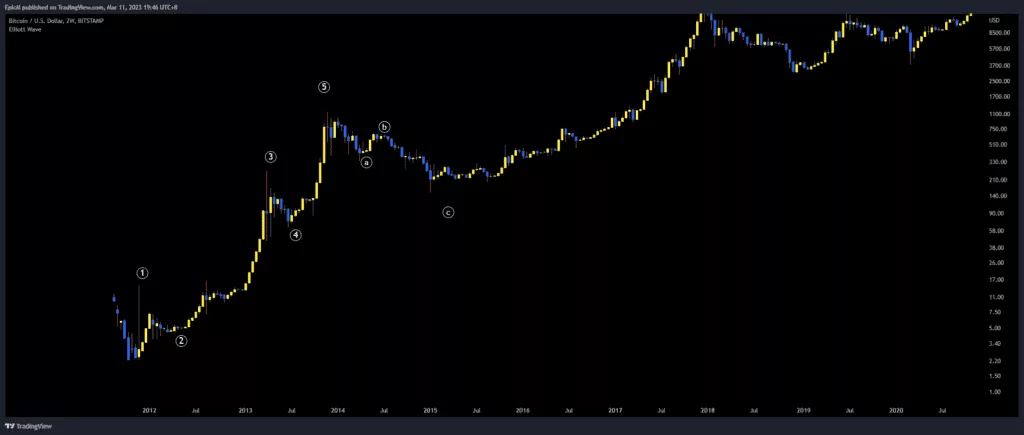
The Elliott Wave Principle is a powerful tool for analyzing markets and making more informed trading decisions. It allows traders to identify impulse waves and correct waves, which can lead to more accurate forecasts. Now that we know how to identify the two types of waves, it’s time to explore the different degrees in the Elliott System for improved forecasts and trading decisions.
The Elliott Wave Principle is based on a five-wave pattern, which can be broken down into multiple degrees. Each degree has a specific purpose and provides valuable insight into market behavior. The most common wave degrees are minor, intermediate and primary. I composed minor waves of three waves, while intermediate waves comprise five waves, and primary waves contain nine waves. All these wave degrees help traders understand the market trend by providing information on which direction it is likely to move next.
By studying different wave degrees, traders can gain an advantage over other market participants by learning how to spot potential opportunities before they occur. This knowledge can enter or exit trades at the right times, providing significant profits with minimal risk. With this knowledge in hand, traders can make sound trading decisions that will maximize their potential returns while minimizing their downside risk.
Frequently Asked Questions
What Are The Potential Risks Associated With Using Elliott Wave Theory?
Investing in the stock market involves a certain risk. With any strategy, it’s essential to fully comprehend the potential drawbacks before making any investments.
A well-known approach many investors use is the Elliott Wave Principle. This method can be an effective tool for predicting the direction of the market; however, there are some distinct disadvantages which should be considered.
The most notable drawback when using this theory is its subjective interpretation of data. Even two experienced analysts may disagree on how to count the waves or which wave is currently occurring. As this system requires forecasting future patterns prior to their conduction, it’s possible that incorrect predictions could be made if not done cautiously and properly.
Meticulous research and constant practice are paramount in order for one to become an expert at reading and interpreting the data with accuracy for maximum efficiency. With key insights about future movements wisely taken from this approach and exercised prudently, it can prove beneficial in ensuring success in investing endeavors in the long run.
How Can I Apply Elliott Wave Theory To Short-Term Trading?
Short-term traders looking to capitalize on the efficiencies of the market can look no further than Ralph Nelson Elliott’s Elliott Wave Theory. This technical analysis method is because instead of moving completely randomly, markets move in waves or cycles that can expect future price movements and make smart trading decisions.
Navigating these waves requires practice, dedication, and expertise with not only Elliott Wave Theory but other accompanying technical analysis methods like Fibonacci retracements and chart patterns as well.
With enough time spent honing your understanding and implementation of these tools, you’ll gain the ability to create your own style of identifying and tracking waves so you’re able to remain one step ahead when trading in the short-term market.
What Other Indicators Should I Use In Combination With Elliott Wave Theory?
For short-term trading, using Elliott Wave Theory on its own can be a tricky business. To get the most out of it, there are a few other indicators you should use in combination to ensure you get the best possible results. Here’s what I recommend:
1. Fibonacci retirements – these provide valuable insight into where support and resistance levels may be found in the market.
2. Moving Averages – this will help you understand the trend of an asset and determine when to enter or exit a trade.
3. Relative Strength Index (RSI) – this indicator measures whether an asset is overbought or oversold, which is helpful for determining entry points and knowing when to take profits or cut losses from trades.
Using these indicators with your Elliott Wave Theory analysis gives you a much better chance of making successful trades in the short-term market. With so many moving parts, being able to read and interpret data quickly can give you an edge over other traders who may not have all this information at their fingertips. Being able to accurately identify trends and make informed decisions can ultimately lead to greater success in the markets and more profitable trades for you.
How Can I Use Elliott Wave Theory To Develop Long-Term Investment Strategies?
Elliott wave theory is an incredibly powerful investment strategy that can develop long-term plans. It’s because market prices move in waves, and by understanding those waves, investors can make more informed decisions about their investments. According to research conducted by the National Bureau of Economic Research, about 70% of all stock market movements can be attributed to Elliott wave theory.
Elliott wave theory requires a deep knowledge of technical analysis and chart reading, as well as a thorough understanding of market cycles. Investors must also have an eye for spotting trends in order to accurately interpret the wave patterns. Other indicators such as support and resistance levels should be used in tandem with Elliott wave theory for greater accuracy. By combining these different factors and focusing on key points along the wave pattern, investors can identify potential entry and exit points for their trades.
Using Elliott wave theory to develop long-term investment strategies requires patience and discipline, but it can be incredibly rewarding when done correctly. With practice, investors will become better at recognizing patterns in the market that they may have previously overlooked. Having a simple plan in place will help ensure that investments are made with confidence and without fear of loss or regret later on down the road. The power of the Elliott wave theory lies in its ability to provide insight into future market movements, allowing investors to make more educated decisions about their portfolio.
Is Elliott Wave Theory Suitable For many Markets?
Are you looking to maximize your gains in investments? You may have heard the term ‘Elliott Wave Theory’ used in terms of long-term investment strategies. So, does Elliott Wave Theory work for all markets? Let’s go over what it is and how it works in more detail.
In short, Elliott Wave Theory is a system that forecasts market trends by recognizing cycles in prices. According to this theory, each wave has specific characteristics that investors can use to expect possible future price movements. When correctly analyzed and identified, these waves can make trading decisions simpler – for example, when a certain wave forms it could show when the trend will change direction or when an investor should exit their position to avoid losses.
Fortunately, Elliot Wave Theory is useful across many kinds of investments; regardless of the exact market being traded, its principles remain unchanged. Being aware of this method provides investors with helpful insights when building long-term investment strategies, as they have access to powerful tools backed by expert knowledge. All traders need are the right tools and knowledge to use Elliott Wave Theory and reap positive results in no time!
Conclusion
In conclusion, Elliott Wave theory is an incredibly useful tool for investors and traders who are looking to gain a better understanding of the markets. It provides an easy-to-follow structure and can develop both short-term and long-term trading strategies. As with any type of market analysis, there are potential risks involved when using Elliott Wave Theory and it is important to consider these before deciding. However, if used correctly, it can provide valuable insights into the direction of market prices.
One key takeaway from this article is that Elliott Wave Theory should not be used in isolation but in combination with other indicators, such as volume or momentum, to confirm potential signals. By doing so, you will identify more reliable trading opportunities and maximize your chances of success. While this theory works well across different markets, it may not always be suitable for some markets because of their particular characteristics.
Overall, Elliott Wave Theory is a powerful tool that can help traders and investors make informed decisions about their investments. With the right approach and knowledge, you can use this method to gain an edge on the markets and potentially increase your profits while mitigating risk. As Mark Twain famously said: “It’s not what you know but what you think you know that gets you into trouble”–so remember to always do your research before making any investments!
